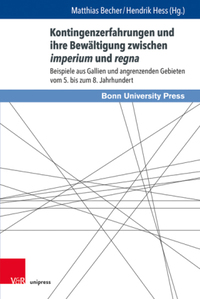Joop van Waarden comes up with a new allusion to Pompey’s tomb in Lucan, shedding light on the death of Sidonius’ grandfather: ‘The Death and Public Rehabilitation of Apollinaris the Elder: Intertextuality with Lucan in Sidonius Apollinaris, Epist. 3.12’, CQ FirstView 30 April 2024.
Read here in open access
Henning Ohst reviews Joop van Waarden’s Mnemosyne article ‘Leafing Through Pliny With Sidonius’ in Forum Classicum 66 (2023) 62-64.
In Sara Fascione’s volume Reading Ancient Latin Letter Collections, Joop van Waarden contributes a chapter entitled ‘The proportions of Latin letter collections: A probe’ (pp. 61-74). This is a sequel to Gibson & Morrison’s chapter ‘Patterns of Arrangement in Greco-Roman Letter Collections’ in the same volume:
‘As Roy Gibson introduced the Ancient Letter Collections project at the conference and expounded his idea of the Augustan poetry book having been seminal for the proportions of Latin letter collections, it occurred to me that a detailed wordcount might finetune our insight into the parameters that mattered for the editors (the authors or later caretakers) of these collections.’
This chapter comes with a complete digital set of calculations and graphs. Download this set here.
Sara Fascione has published a volume of conference papers: Concatenantur sibi epistulae nostrae. Reading Ancient Latin Letter Collections (23-24 September 2021), Echo 38, Foggia: Il Castello Edizioni, 2022.
View the Introduction and ToC
Sidonius’ correspondence is among the collections analysed by Joop van Waarden in ‘The proportions of Latin letter collections: A probe’, pp. 61-74. Download the accompanying digital set of calculations and graphs.
Joop van Waarden has reviewed Filomena Giannotti’s Scrinia Arverna in CR First View 2022.
As part of the Celtic Conference (Lyon, 18-21 July), a panel, organised by Scott DiGiulio and Dominic Machado, will convene on “Poeticis magis decora? Latin Prose and the Limits of Intertextuality”. Joop van Waarden will be speaking on “Sidonius’ Journey to Rome at Ockham’s Razor’s Edge”.
Full programme on the conference website.
Joop van Waarden has published the second part of his series on ‘You and I’ in epistolary usage: ‘Symmachus and the Metamorphosis of “You and I” in Epistolary Usage’, in: Antonella Bruzzone, Alessandro Fo and Luigi Piacente (eds), Metamorfosi del Classico in età romanobarbarica, Nuova biblioteca di cultura romanobarbarica 2, Florence: Sismel–Galluzzo, 2021, 145-61.
Info volume here
The first, and central, part of this series is chapter 13 in the Sidonius Companion: ‘“You” and “I” in Sidonius’ Correspondence’ (pp. 418-39). The third part is to follow soon: ‘A Gentleman Weighs His “You” and “I”: Inclusion in the Letters of Faustus, Mamertus Claudianus, Ruricius, Avitus and Ennodius’, in: Veronika Egetenmeyr and Tabea L. Meurer (eds), Gallia docta? Learning and Its Limitations in Late Antique Gaul. Proceedings of the International Conference Greifswald, 17.03.2021 – 20.03.2021, Tübingen: Mohr Siebeck.
Joop van Waarden will be speaking on “Sidonius’ Journey to Rome at Ockham’s Razor’s Edge” as part of the panel “Poeticis magis decora? Latin Prose and the Limits of Intertextuality”, organised by Scott DiGiulio and Dominic Machado.
Joop van Waarden connects Sidon. Ep. 1.1 to a couple of Pliny’s letters. His piece has just been published as an advance article of Mnemosyne: “Leafing through Pliny with Sidonius: Sidon. Ep. 1.1, Plin. Ep. 1.1, 1.2, and 1.5, and Satire”.
Online open access
In 2017, at the invitation of the University of Bonn, Joop van Waarden reflected on the SAxxi project and the Bonn Contingency project. Now out, in de proceedings of that day: ‘Das Sidonius- und das Kontingenz-Projekt im Spiegel der Theorie’, in: Matthias Becher and Hendrik Hess (eds), Kontingenzerfahrungen und ihre Bewältigung zwischen imperium und regna. Beispiele aus Gallien und angrenzenden Gebieten vom 5. bis zum 8. Jahrhundert, Göttingen: V&R unipress, 2021, 29-49.
The book’s blurb: In Gaul and neighbouring areas Late Antiquity and the Early Middle Ages were times of political upheaval, change and unpredictable dynamics. As alternative to historical metanarratives such as ‘fall/decline’, ‘continuity’ or ‘transformation’ the papers of this volume analyse the narrative modes of (coping with) contingency – understood as the space which makes coincidence possible and intelligible (following Luhmann, Rüsen and others) – in contemporary sources.








